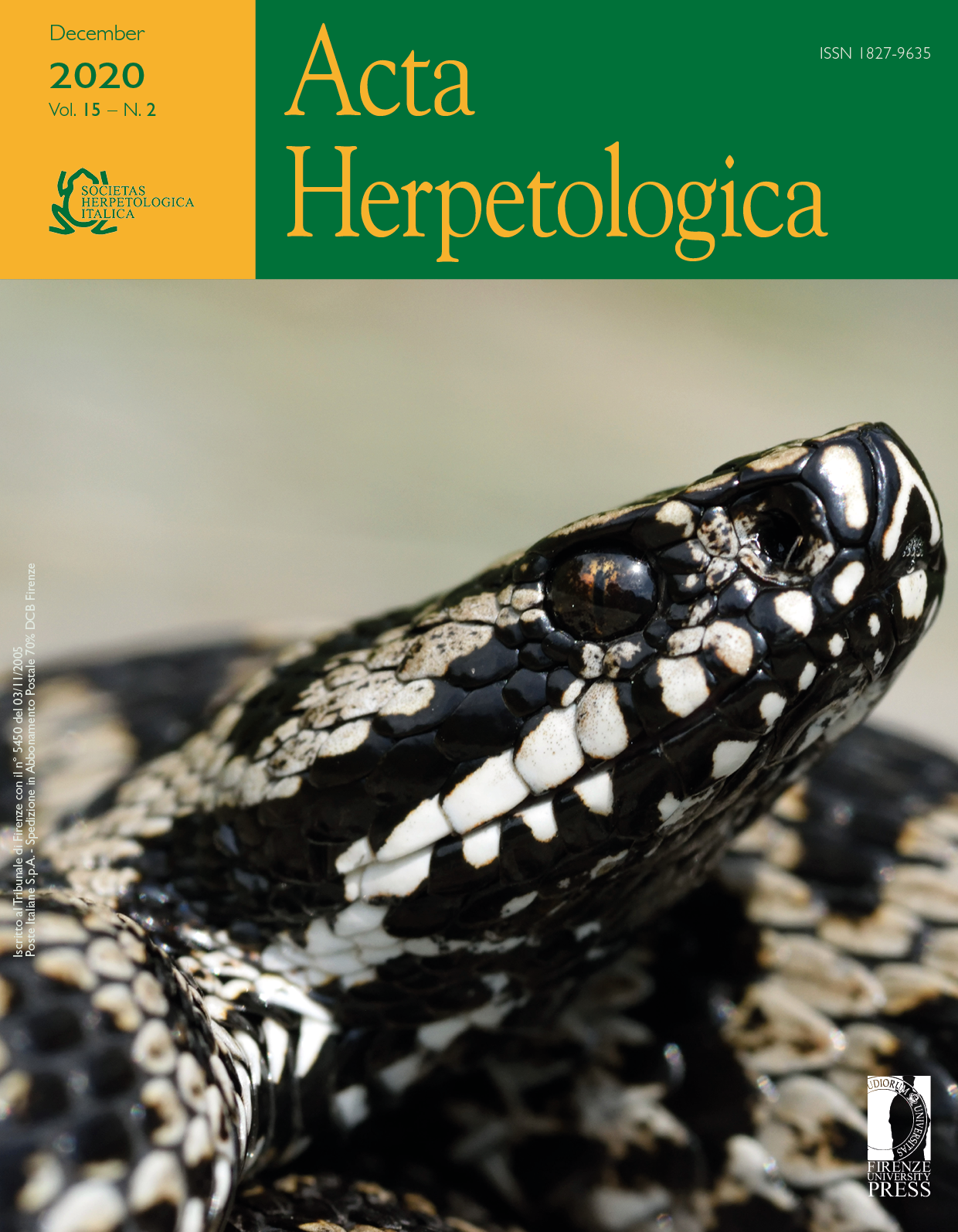Notes on sexual dimorphism, diet and reproduction of the false coral snake Oxyrhopus rhombifer Duméril, Bibron & Duméril, 1854 (Dipsadidae: Pseudoboini) from coastal plains of Subtropical Brazil
Published 2020-12-08
Keywords
- Feeding habits,
- reproductive biology,
- Pampa Biome,
- Squamata,
- Xenodontinae
How to Cite
Abstract
Herein, we provide information on diet, sexual dimorphism and reproductive biology of the false coral snake Oxyrhopus rhombifer from the southernmost Brazilian coast, Pampa Biome, a region under influence of subtropical climatic domains. The analysis of 142 specimens revealed a marked sexual dimorphism, with significant differences for all the characters analyzed. The diet of the species is composed by small rodents and squamate reptiles, the latter consisting mainly of lizard tails, probably autotomized. Males reached sexual maturity at smaller sizes (SVL) than females (354 mm vs 451 mm, respectively). Secondary follicles were found mainly in spring months and one single female presented 3 oviductal eggs in January (summer). Our results add to the knowledge on biology of snakes in the Pampa morphoclimatic domain.






